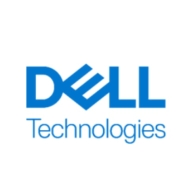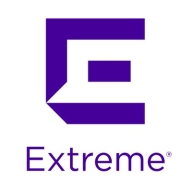

ExtremeSwitching and Dell PowerEdge Rack Servers operate within the network infrastructure and high-performance server categories. Dell PowerEdge Rack Servers have the upper hand due to their robust management features and ability to handle complex workloads more effectively.
Features: ExtremeSwitching is characterized by its ease of use, scalability, and cost-effectiveness. It supports unique protocols like ring topology and deep packet inspection and has an aggressive pricing strategy attractive to small and medium-sized markets. Dell PowerEdge Rack Servers are known for high-performance workload handling, integration, and management sophistication with features like iDRAC, offering flexibility and reliability in tackling virtualization and AI workloads.
Room for Improvement: ExtremeSwitching could improve training resources and support services. It also needs enhancements in management interface usability and hardware flexibility to compete better with industry leaders. Dell PowerEdge Rack Servers require simplification in configurability and a more competitive price structure. Enhancements are needed in centralized management and better VMware integration.
Ease of Deployment and Customer Service: ExtremeSwitching is deployable in various environments such as on-premises and hybrid clouds, though it could benefit from better training and more responsive support services compared to competitors. Dell PowerEdge Rack Servers offer comprehensive support with responsive and versatile deployment options, backed by a robust network of assistance from the technical team.
Pricing and ROI: ExtremeSwitching offers affordable pricing compared to major competitors with flexible licensing options that reduce maintenance costs. Dell PowerEdge Rack Servers, although having a higher initial cost, provide justified long-term value through their reliability and performance. Their competitive pricing and enterprise agreement flexibility offset the higher costs associated with comprehensive configurations.
It is hard to measure the total cost of ownership because we have a distributed environment.
ROI is there, but it's a complex assessment when considering the return on investment from the hardware.
The return on investment is high.
Dell’s technical support is rated between eight and nine.
Customer service provides very good support, with an SLA of about one business day to respond to our tickets.
When we do use Dell's support, they have never ignored an issue.
Requiring improvement in the technical support provided to customers.
The scalability of Dell PowerEdge Rack Servers is excellent.
We can add new servers at any time, so the scale-out option is there.
Customers looking for higher densities are starting to lean towards AMD to achieve more cores, higher density, lower wattage, and ultimately a smaller footprint with fewer servers.
ExtremeSwitching is highly scalable, and I would rate it as nine out of ten.
Over four years, we've had less than 1 percent downtime.
There is a feature to update the server while it is running, so there is no need to restart.
It is stable.
We need to know about any upcoming updates so that we can plan accordingly.
PowerEdge could have more configuration options, such as the ability to combine different CPUs, memory volumes, data storage, and memory.
After the expiration of support, it is sometimes challenging to find parts like hard drives, especially for obsolete models.
ExtremeSwitching's software stability could be improved, as it sometimes crashes.
They have been stable and running for years without performance downtime or significant disc failures.
Some customers find it cheaper due to contractual agreements, while others find it expensive, especially when scaling up.
The software associated with servers, like VMware subscription licenses, drives costs.
ExtremeSwitching is priced in the mid-range, not too expensive nor too cheap.
They keep running for at least five to seven years without any issues.
With PowerEdge Servers, I don't need a one-to-one ratio redundancy, which leads to about eighty percent downtime reduction.
One of the valuable features is Active Directory, which helps in managing the network.
The most valuable feature of ExtremeSwitching is the Extreme Fabric, specifically the switching fabric.


Dell PowerEdge Rack Servers are designed to optimize performance and efficiency in a data center environment, supporting various applications. Dell stands as the leading vendor in accelerated servers for AI, commanding a 33.8% revenue share. Based on user reviews, Dell PowerEdge Rack Servers supporting tasks from basic web hosting to more demanding applications like data analytics and virtualization. They are engineered to offer high performance, reliability, and scalability. With a focus on automation and integrated security, these servers simplify operations and protect against threats, making them a smart choice for businesses of all sizes.
Dell PowerEdge Rack Servers are a robust, secure, and scalable solution that can meet the diverse needs of businesses, backed by comprehensive support. Benefits to look for in reviews include performance, reliability, scalability, and customer support.
Dell PowerEdge Rack Servers key features include:
In terms of implementation, Dell PowerEdge Rack Servers are used across various industries, from small businesses to large enterprises. They serve as the foundation for IT infrastructure, powering critical applications in healthcare, finance, education, and more. The adaptability of these servers means they can be tailored to specific industry needs, from handling large datasets in research institutions to supporting high-transaction databases in financial services.
We monitor all Data Center Networking reviews to prevent fraudulent reviews and keep review quality high. We do not post reviews by company employees or direct competitors. We validate each review for authenticity via cross-reference with LinkedIn, and personal follow-up with the reviewer when necessary.